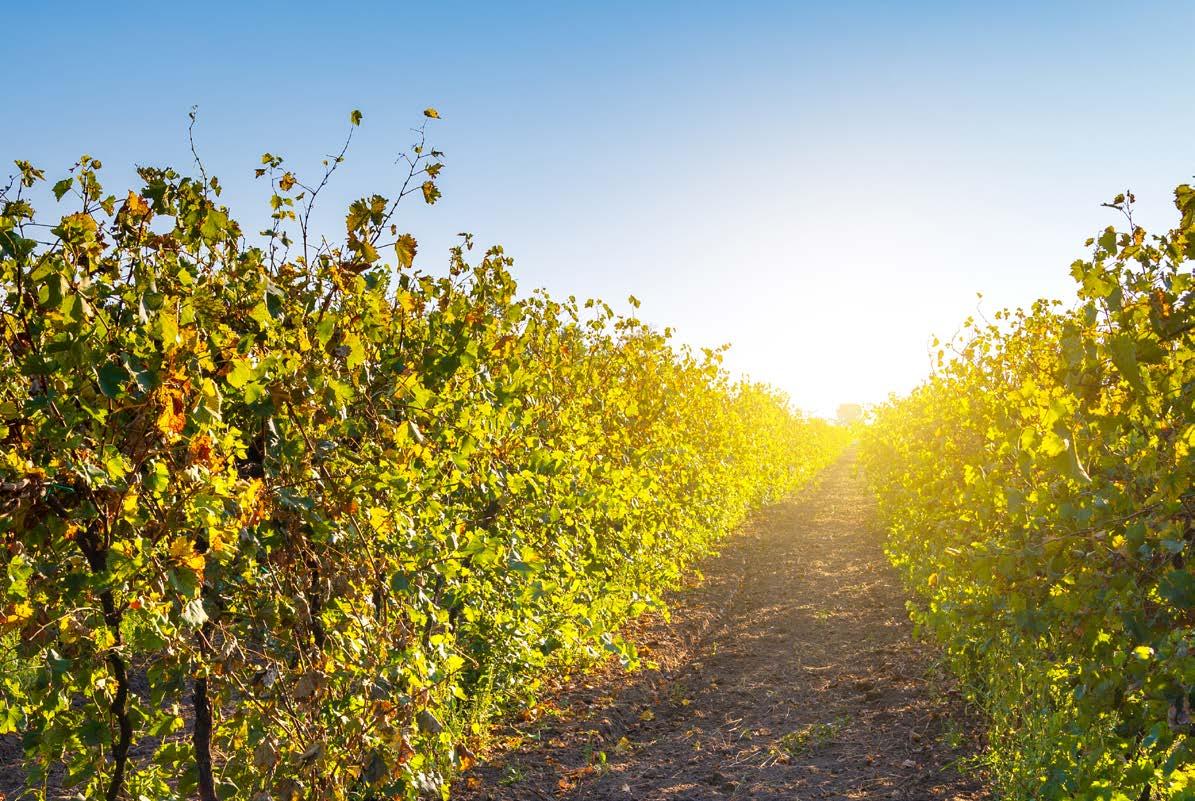
7 minute read
Ask the AWRI
ask the Vineyard nitrogen management Sustainability in a urea-limited world
Many food and agricultural sectors are currently dealing with reduced availability and/or increased cost of nitrogen-based fertilisers and additives. Australia imports 90% of its nitrogen-based chemicals from India, Morocco and China. Reduced worldwide production of these chemicals due to natural gas being redirected for energy needs has resulted in major export nations such as China and Russia placing restrictions on exports of urea to control prices in their own domestic markets. This has increased prices on the international market by a factor of three to four since December 2019 (e.g. the price of urea has increased from ~AU$300 to more than $1,200/metric tonne) (Index Mundi, May 2022). In this article, AWRI Senior Viticulturist Robyn Dixon and Senior Oenologist Geoff Cowey address some of the options for managing vineyard nitrogen levels in a urea-limited world.
What are the requirements for nitrogen in vineyards? Nitrogen plays a major role in all grapevine processes and a significant amount is essential for vine growth and metabolic functions. Nitrogen and other nutrients are removed from the vineyard each year in harvested fruit; for example, one tonne of fruit removes about 2 kg of nitrogen. Nitrogen can also be lost from the soil via leaching, erosion, conversion to ammonia gas, and temporary immobilisation through the addition of organic material with a high C:N ratio. Nitrogen can also be lost through the removal of pruning material. However, in Australia, unless diseased wood needs to be removed, prunings are usually mulched or mowed and retained in the vineyard. Annual urea loss from a vineyard is approximately 75 kg per hectare. The nitrogen losses are dependent on many factors such as vine yield and rootstock, soil temperature, soil structure and texture, soil drainage and irrigation management. In cool regions, typical supplementation rates used are around 20 kg of nitrogen per hectare, while in warmer regions approximately 50-60 kg of nitrogen per hectare is a good starting point.
What happens to the vine if nitrogen is limited?
Nitrogen forms part of the chlorophyll in plants, which uses sunlight to convert carbon dioxide and water to produce sugars and also gives leaves their green colour. Nitrogen deficiency causes leaf yellowing (chlorosis) and reduces the photosynthetic capacity of the vine. Nitrogen also plays a key role in inflorescence initiation and development as well as berry growth. Nitrogen deficiency in grapevines can reduce vine vigour, reduce yields and also have a significant impact on the composition of grape berries, delaying sugar accumulation, the development of flavour precursors and the accumulation of nitrogenous compounds (amino acids and ammonium). Nitrogenous compounds present in must play a critical role in the fermentation process and the final wine composition.
How can you make the most of your nitrogen in the vineyard? If fertiliser supply remains constrained, then limiting nitrogen removal from the vineyard will be important, as will incorporating alternative sources of nitrogen such as compost and nitrogen fixing cover crops. In some vineyards, a leguminous cover crop grown over winter may provide sufficient nitrogen. If fertiliser is required, making sure fertiliser applications are effective and targeted is key to improving nitrogen use efficiency. Fertiliser type, timing of application and application method are all important factors to consider. Nitrogen fertilisers can be spread over the whole vineyard, banded under vine or in the mid-row for cover crops, or they can be applied as a foliar spray or dissolved in the irrigation water (fertigation). The application of a mobile nutrient like nitrogen to the soil should follow periods of active root growth. This occurs around four to six weeks post-bud burst and post-harvest. Timing the application of nitrogen to periods of active root growth will increase uptake and reduce losses from leaching. Applying nitrogen too early in the season is futile as there is little to no root growth and vines are still using nitrogen stored from the previous season.
Nitrogen applications between fruit set and veraison can enhance amino acid concentration in berries, while post-harvest applications can increase nitrogen storage in the woody tissues over winter and enhance early shoot growth and yields in the following season.
How should I apply nitrogen fertiliser? The accessibility of nitrogen by vines relies on the presence of sufficient soil water. Solid fertiliser applications made to the soil surface need to be incorporated into the soil by irrigation, rain or tillage. Since nitrogen is highly mobile in water, careful management of irrigation is important to ensure the timing and volume of irrigation applications are not causing nitrogen leaching. Fertigation offers better control of nitrogen applications, allowing for the application of smaller amounts of nitrogen applied at regular intervals. Bacteria, slime and algae often thrive in irrigation systems, and it may be necessary to clean irrigation lines periodically. The water management
section of the AWRI website provides information on best-practice irrigation monitoring and maintenance. Foliar applications of nitrogen can be used to supplement an appropriate seasonal soil fertiliser program; however, only low biuret urea should be applied to foliage to avoid damage to foliage. Foliar application is generally better suited to micronutrient supply as it is difficult to supply sufficient quantities of macronutrients via this method. Rainfall after application may also affect the longevity of any application on the leaves.
Can winery nitrogen supplementation replace vineyard fertilisation? Tian et al. (2022) compared nitrogen fertiliser in the vineyard (none, foliar or soil application) with nitrogen supplementation only in the winery for Chardonnay grapes across several years. Soil fertilisation affected canopy growth and yield, and increased nitrogen in fruit, whereas foliar application saw no changes to the vine and only modest increases in fruit nitrogen. While similar nitrogen additions in the winery resulted in similar fermentation kinetics to vineyard soil nitrogen fertilisation, they did not produce wines with the same positive sensory characteristics. Thus, both vineyard and winery nitrogen supplementation are likely to be required for healthy vines and for the production of quality fruit and wine.
What is happening to address the nitrogen shortage? Construction of a domestic urea production site in WA is planned for 2023. In the meantime, producers are advised to work closely with suppliers, allow longer lead times for supply of chemicals, budget accordingly and consider options provided above for making the most of nitrogen in the vineyard. For further information contact the AWRI helpdesk on (08) 8313 6600 or helpdesk@ awri.com.au
References and further reading
Index Mundi commodity price indices: https://www.indexmundi.com/ commodities/?commodity=dap-fertilize r&months=60¤cy=aud Proffitt, T., Campbell-Clause, J. 2012. Managing grapevine nutrition and vineyard soil health. Available from: https://winewa.asn.au/wp-content/ uploads/2020/04/Grapevine_Nutrition_ LR_2.pdf Tian, T., Ruppel, M., Osborne, J., Tomasino, E., Schreiner, R.P. 2022. Fertilize or supplement: The impact of nitrogen on vine productivity and wine sensory properties in Chardonnay. Am. J. Enol. Vitic. 73: 156-169.
Specialising in the supply of quality plant nutrition and biostimulant products to the primary industry, De Sangosse Australia has a shared vision that agriculture should be innovative, sustainable, and efficient. This is achieved by developing a portfolio of solutions to improve the soil health, crop quality, and yield by focusing on products for the whole life cycle of the plant. Agronutrition, a fully owned subsidiary of De Sangosse SAS, designs, manufactures and markets a range of innovative plant nutrition solutions that provides appropriate and precise nutrition from planting through to harvest in both conventional and organic operations. Currently featuring six key products with NASAA certification, De Sangosse offers a broad range of high performing agriculture solutions to assist all crops through all growth stages. Backed by high quality R&D, Agronutrition’s soil biotechnologies laboratory has identified over 350 strains of bacteria and fungi for their individual properties and benefit to crops. Developed from two strains of nitrogen-fixing bacteria, Amylis is an innovative solution that activates the life of the soil, benefiting the bacteria population and crop through the fixation of atmospheric nitrogen. Continuing their innovation, Connectis is composed of mycorrhizal spores and can attach itself to crop roots to help them assimilate nutrients and water in larger quantities, increasing root growth and biomass production. The last of the biofertilisers is Baseos, containing living bacteria that solubilises phosphorous present in the soil. Following the biofertiliser range are three remaining key products that make up the organic range. Actigreen enhances the photosynthetic activity and the efficiency of water use by increasing stomatal conductance. Under stressful conditions, the use of Actigreen can assist with the prevention of damage through these challenging times. Borozinc simultaneously supplies both boron and zinc concentrated in a stable, soft and soluble form. Applications of Borozinc early in the season improves fruit set and harvest quality, whilst a post-harvest application locks in potential for early success next season. Algonia K is the complete plant booster to improve quality and yield. Containing seaweed extracts, Algonia K assimilates nutrition through both foliar and fertigation. Applications of Algonia K assist the synthesis and transfer of sugars during the ripening stages prior to harvest.













